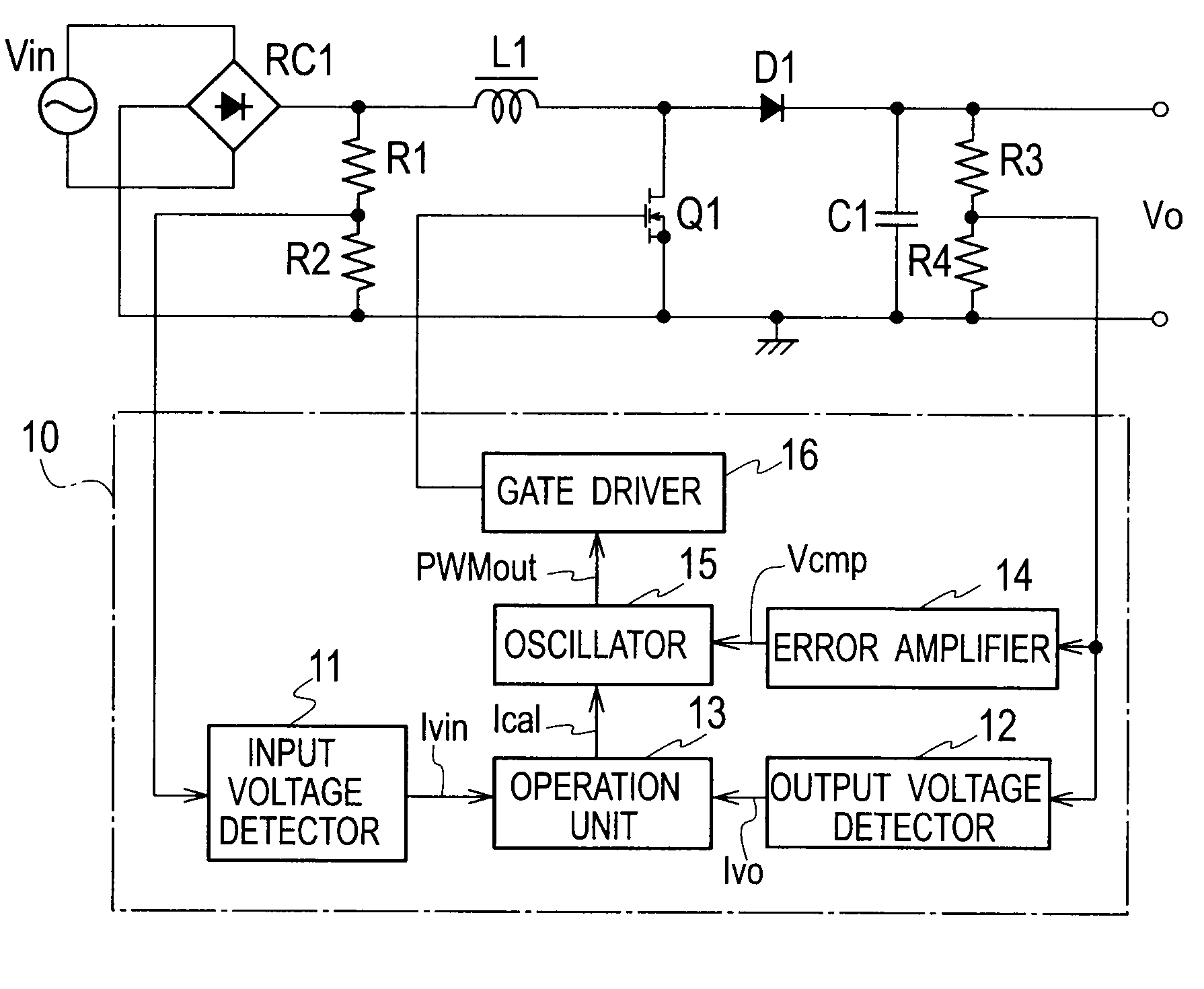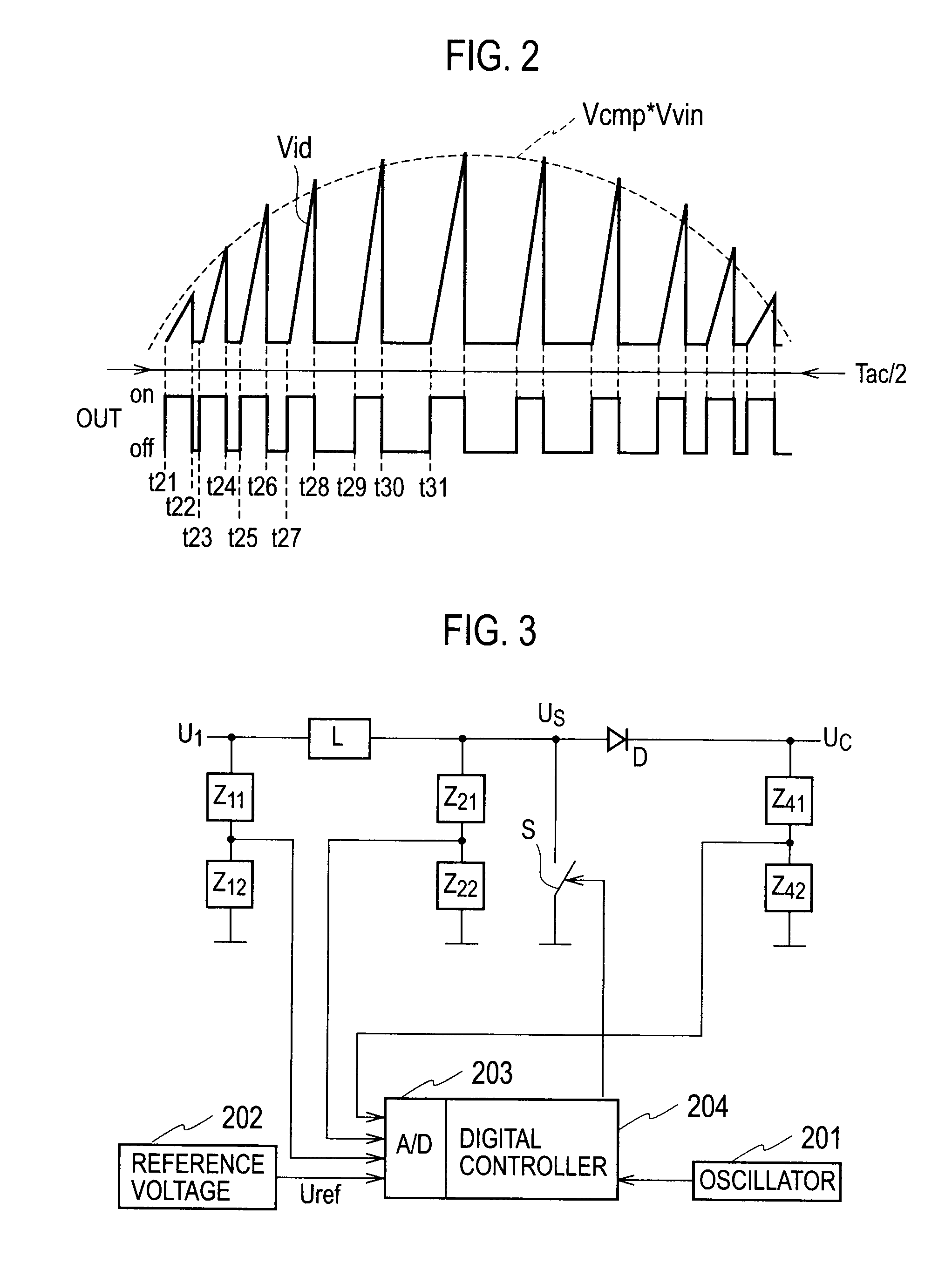Power factor correction circuit
a technology of power factor and circuit, applied in the direction of electric variable regulation, process and machine control, instruments, etc., can solve the problems of abnormal state, increase the cost of the circuit, increase the size of the circuit, etc., to increase the circuit cost, reduce the risk, and increase the circuit size
- Summary
- Abstract
- Description
- Claims
- Application Information
AI Technical Summary
Benefits of technology
Problems solved by technology
Method used
Image
Examples
embodiment 1
[0036]FIG. 4 is a circuit diagram illustrating a power factor correction circuit according to Embodiment 1 of the present invention. The circuit includes a first rectifier RC1 to rectify and convert an AC voltage of an AC power source Vin into a DC voltage. An output of the first rectifier RC1 is connected to a series circuit including a step-up reactor L1 and a switching element Q1 made of an n-type MOSFET. Both ends of the switching element Q1 are connected in parallel with a rectifying-smoothing circuit including a second rectifier D1 and a smoothing capacitor C1. A voltage across the first rectifier RC1 is connected to a series circuit including resistors R1 and R2. Both ends of the smoothing capacitor C1 are connected to a series circuit including resistors R3 and R4.
[0037]A controller 10 controls an ON / OFF operation of the switching element Q1 and includes an input voltage detector 11, an output voltage detector 12, an operation unit 13, an error amplifier 14, an oscillator 15...
embodiment 2
[0079]FIG. 11 is a circuit diagram illustrating a power factor correction circuit according to Embodiment 2 of the present invention. Embodiment 2 differs from Embodiment 1 in that it employs a control circuit 10a of different configuration. Accordingly, only the control circuit 10a will be explained.
[0080]In FIG. 11, the control circuit 10a includes an input voltage detector 11, an output voltage detector 12, an error amplifier 14, an oscillator 15a, a gate driver 16, and a multiplier 17.
[0081]The input voltage detector 11 converts a divided input voltage signal Vvin into an input voltage signal Ivin and provides the oscillator 15a with the input voltage signal Ivin. Here, the divided input voltage signal Vvin is obtained by dividing an output voltage of a first rectifier RC1 by resistors R1 and R2. The input voltage signal Ivin is a current signal proportional to the output voltage of the first rectifier RC1. The divided input voltage signal Vvin is also supplied to the multiplier...
PUM
 Login to View More
Login to View More Abstract
Description
Claims
Application Information
 Login to View More
Login to View More - R&D
- Intellectual Property
- Life Sciences
- Materials
- Tech Scout
- Unparalleled Data Quality
- Higher Quality Content
- 60% Fewer Hallucinations
Browse by: Latest US Patents, China's latest patents, Technical Efficacy Thesaurus, Application Domain, Technology Topic, Popular Technical Reports.
© 2025 PatSnap. All rights reserved.Legal|Privacy policy|Modern Slavery Act Transparency Statement|Sitemap|About US| Contact US: help@patsnap.com



